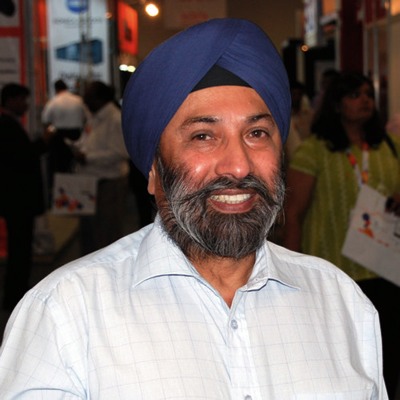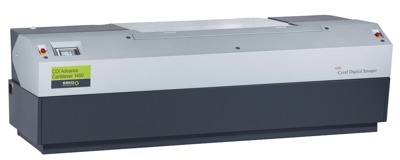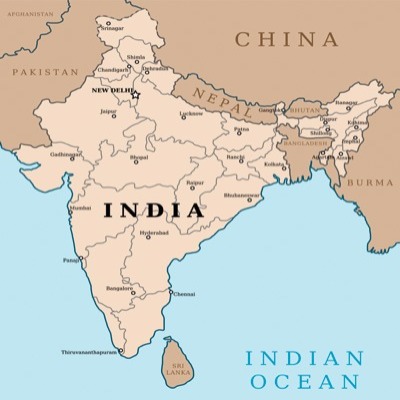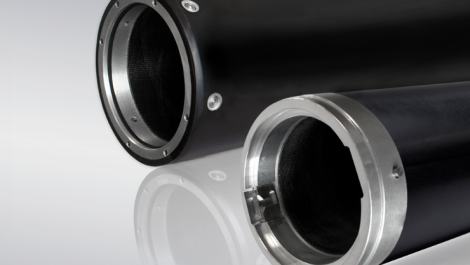In our series on printing and packaging around the world, we look at India and the history of label printing. Harveer Sahni, managing director, Weldon Celloplast in New Delhi, tells the story from the 1970s up to today.
The first self-adhesive label printed in India was produced by Manohar Lal Bhatia in sheet form using the screen printing process, a primitive process in those days. As a young man I tried it out in the laboratory in my factory and printed labels for our consumer products. I also trained our workers on how to print using the screen printing process. Pre-press was very basic and it was all done by hand. I fondly remember that the designers were referred to as artists, and they were indeed artists in the true sense of the word. They would create a concept in their minds and draw it on paper, make a couple of variations and present these to the brand owners. The first Indian to take up self-adhesive label production in roll form was Jeetubhai who formed a partnership in 1972 with his income tax consultant and friend PP Bhagat and started the International Trading Company at Kalyandas Industrial Estate, in Worli, where a Japanese flatbed label press was installed. Now as I prepared to describe the whole process of evolution from the early 1970s to now, I decided to call the grand old man Jeetubhai himself, now 78 years old, and get his input. I asked him which technology the industry employed then and where it is today. He laughed and said, ‘I don’t understand the technology being employed now, it is all different, but how we printed then is still fresh in my mind!’ He printed on flatbed presses that worked more or less like a rubber stamp, but today, his son and grandson take care of the business which employs advanced flexographic printing techniques.
In those days, it was quite an effort to get the pre-press done. While the design making and producing the negative/positive process was same as screen printing, complications arose because these machines used copper or zinc blocks to print. General printers who used the treadle machines were also using such blocks mounted on wooden base, but the Japanese presses needed unmounted blocks with much deeper etchings. Jeetubhai had learnt this during a trip to Japan, so he could impress upon the block makers the necessity of perfecting the technique to produce blocks suitable for his application. Flatbed cutting dies also posed a big problem as the general printers were using dies made with a 1 inch wide blade rule on wooden bases while the new press required a Bakelite base with 8 mm blades not then available in India. ‘Necessity is the mother of invention’ and Jeetubhai located a die-maker with a workshop in Mumbai’s red light district, who was willing to take the challenge. Jeetubhai spent many late nights sitting in the die-makers workshop trying to get the dies right. They finally used a slotter to cut the 1 inch blade to 8 mm and fix onto the Bakelite plate thereby producing the workable die. In those days, Jeetubhai grew a beard so that he would not be recognised by any acquaintances when frequenting the red light area. His indulgence and persistence eventually paid off and he was able to print and die-cut the labels in roll form. As more people installed such label presses, the infrastructure to support this process also developed. The block makers learned to produce colour separations and provide blocks for multicolour line and even halftone jobs. By 1980-81, Surinder Kapur at RK Papers Mumbai had switched over to Nylo (polymer) plates for printing on these flatbed machines. It was also the first company to install a platemaking machine in-house for captive consumption. Around this time the semi-rotary letterpress label press with multiple rolls to spread ink and achieve fine printing had arrived in India. This was followed by the intermittent letterpress and later by full rotary letterpress with servo motors.
 Harveer Sahni, managing director, Weldon Celloplast
Harveer Sahni, managing director, Weldon Celloplast
New era dawns
In 1983 Vinayak Sood of Liddles, New Delhi, installed a pre-owned Mark Andy flexo rotary label press and this signalled the beginning of a new era of faster label production. With just one anilox roller, the measured quantity of ink would be delivered to the polymer plate, which in turn would print the image on the paper in a fully rotary continuous process. The printed web was also die-cut inline at the same speed with the help of solid cutting dies and later by flexible dies mounted on magnetic cylinder. Polymer plates for narrow web label presses were initially not available and had to be imported. As flexo printing evolved, the plates became available locally, however, cutting dies, solid dies, magnetic dies and flexible dies are even to this day, largely imported. There are at least two small scale manufacturers who offer magnetic cylinders, and another company in southern India, has invested in a project to produce flexible dies. The established label printers still prefer to use imported dies that are reliable and available within three working days of ordering. It was not until 1993 that the first brand new Mark Andy label press was installed by Patel Printing Press in Ahmedabad. I spoke to industry veteran, Sudhir Sawant, who has been servicing the equipment needs of the industry for many years and used to work for EAC Graphics when it was the agent for Mark Andy in India. The narrow web flexo technology further evolved into UV flexo when Amar Chhajed at Webtech Mumbai, bought the first all UV Mark Andy in 1999. This facilitated printing with specially formulated UV inks and gave filmic label production a shot in the arm. Mr Chhajed has many firsts to his credit: he installed the first MIS in the narrow web label industry, specialised software from Shuttleworth. He was also the first to install an AVT inspection system and followed this up by being the first label printer to install a CTP system from Kodak.
Plates improved
In the early days, flexographic printing was very elementary and did not match up to the standards of offset. It was only after 1990 that advances were made to the quality of flexo presses, plates and inks. Most of the development can be attributed to photopolymer plates, including improvements to the plate material and the method of plate creation. Digital CTP systems have done well for the industry. Companies like Asahi Photoproducts, AV Flexologic,DuPont, MacDermid, Kodak and Esko have all pioneered the latest technologies, with advances in fast washout and the latest screening technology. In India the credit for upgrading and bringing flexo printing to a quality that almost rivals offset, goes largely to DuPont and Esko. Prasenjit Das, sales manager at DuPont Packaging Graphics, said, ‘It all started in 1975 when DuPont introduced Cyrel photopolymer plates to the world. These were introduced in India in the mid 90s in the form of an analog plate. In 2002, Numex Blocks, Mumbai, bought the first CDI in India, and in 2006, DuPont introduced its Cyrel Fasttechnology in India when the first unit was installed at Color Dot, Chennai. Today we have more than 10 installations in the Indian sub-Continent.’ Shrihari Rao, sales director at Esko, commented, ‘India moved from conventional flexo to digital flexo (standard resolution) way back in 2002 with Numex being the first to invest in an Esko CDI 2530 digital imager with workflow software. It took a while for the demand for high quality to gain momentum and the cost of digital plates did not justify/boost the growth of digital flexo, but Numex’s consistent push and education in the market with industry leaders like Esko and DuPont started yielding results in 2004 when it upgraded to a CDI 4835. Colordot in Chennai and Veepee in Bangalore were next to invest in the CDI 4835, and from 2005, many new servo based presses were installed in India raising the need for higher quality plates. Pinmark, Shilp Gravure, Creative Graphics and other flexo trade shops followed suit, and today, all the major quality driven trade shops in India have Esko CDIs with HD Flexo. Veepee (serving PragatiPack) has just upgraded to HD Flexo with Inline UV2 while Numex Blocks installed the first CDI Advance Cantilever 1450 with HD Flexo for sleeve and platemaking in South Asia, in March last year.’
 The first CDI Advance Cantilever 1450 in India has been installed at Numex Blocks
The first CDI Advance Cantilever 1450 in India has been installed at Numex Blocks
Inline advantages
The label industry in India found a new direction when New Delhibased Good Work Company installed the first combination press, a Gallus with inline rotary screen and flexo printing. Offset printers were used to moving their material around their factories for different processes. Shifting stacks of sheets from printing to foiling, to varnishing to embossing to lamination, to die-cutting, etc, is or was an accepted process. When offset printers moved into label conversion, they soon realised the convenience of inline converting, while label printers wanting to expand into packaging wanted their manufacturing to deliver like in labels, all in a single pass. Veekay Graphics in Mumbai opted for a flexo press with offset capabilities and Pragatipack Hyderabad has installed an Omet Varyflex press. Taking the industry a step further, ETI Converting in Canada has signed up with a printer in India to produce linerless labels. The last two editions of Labelexpo Europe at Brussels and then drupa indicate the move from conventional to digital printing. Indian label printers like Janus and Webtech have already installed digital label presses and there are others who have followed in their footsteps, but this technology has yet to take off in India. The technologies continue to evolve while the printers and the machine builders need to keep on developing new processes. The pioneering work of the likes of Manohar Lal Bhatia and Jeetubhai has to be acknowledged as it brought the label industry in India to the level it is today. The evolution of self-adhesive label production is an ongoing process that will keep on going!






